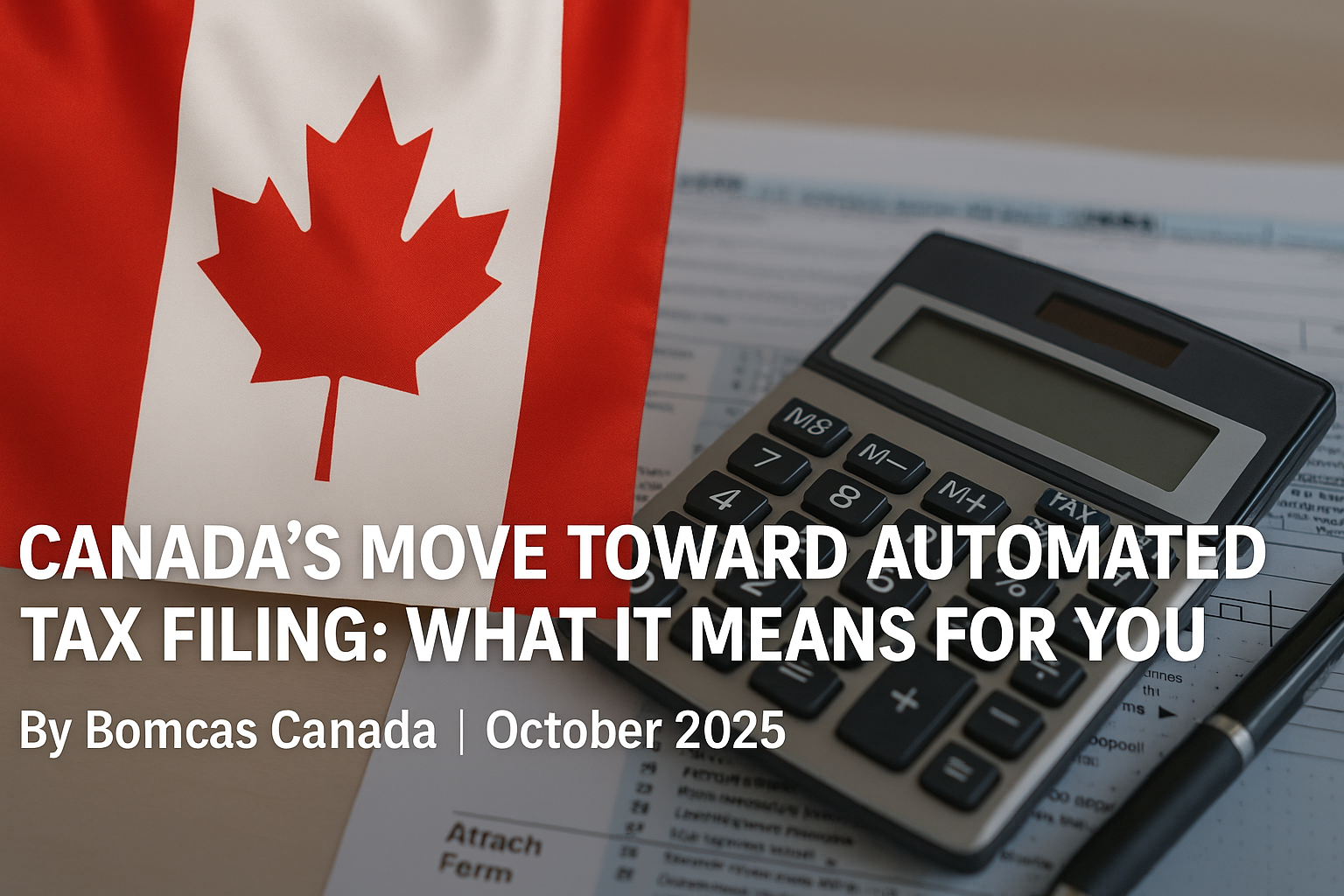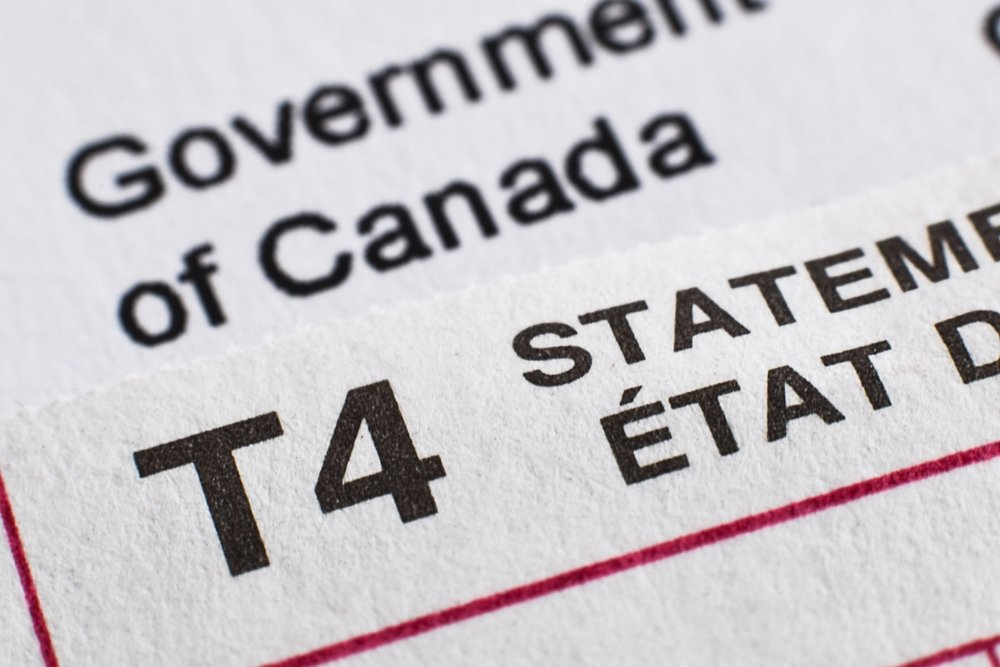The Ontario Low-Income Workers Tax Credit is a pivotal measure to support low-income earners in the province. This innovative tax relief program, also known as the LIFT credit, impacts the financial well-being of thousands of Ontario residents. Reducing the provincial income tax burden for eligible individuals aims to put more money back into the pockets of those who need it most, fostering economic stability and improving the quality of life for low-income households.
This comprehensive guide delves into the intricacies of the Ontario Low-Income Workers Tax Credit, providing valuable insights for tax filers and those seeking to understand Canada’s benefits for low-income individuals. It explores the eligibility criteria, outlines the claiming process, and explains how the credit amount is calculated. Additionally, the guide examines the influence of credit on Ontario’s income tax, its benefits for minimum wage workers, and recent changes to the program. Whether you’re a Canadian resident looking to take advantage of this tax relief or a professional seeking to assist clients, this article offers the essential information to navigate the Ontario Low-Income Workers Tax Credit effectively.

What is the Ontario Low-Income Workers Tax Credit?
Definition
The Ontario Low-Income Workers Tax Credit, also known as the Low-Income Individuals and Families (LIFT) Tax Credit, is a non-refundable tax credit designed to provide personal income tax relief to lower-income workers in Ontario. This credit can potentially reduce or eliminate the Ontario personal income tax payable by eligible individuals, excluding the Ontario Health Premium.
Purpose
This tax credit primarily aims to support low-income earners in Ontario by lessening their provincial tax burden. It offers financial assistance to those working and earning a low income, helping them cope with the rising cost of living. The credit can provide up to CAD 1,179.80 annually for individuals and CAD 2,359.60 for couples in Ontario personal income tax relief.
Also known as LIFT
Commonly referred to as the LIFT credit, this tax measure targets low-income workers in Ontario. The credit amount is calculated based on an individual’s employment income and adjusted net income. It’s important to note that the credit amount gets reduced by 10% if the individual’s income exceeds CAD 41,640.01 and the family income is more than CAD 83,280.01.
To qualify for the LIFT credit, individuals must meet several criteria:
- Be a Canadian resident at the beginning of the tax year
- Be an Ontario resident by December 31 of the tax year
- Have employment income for the year
- Owe Ontario personal income tax
- Have an individual adjusted net income below CAD 69,400.01
- Have an adjusted family net income below CAD 114,510.01
- Not have spent more than six months in prison during the year
It’s worth noting that individuals with self-employment income are not eligible for the LIFT credit. Additionally, those subject to the Ontario additional tax for minimum tax purposes or confined to a prison or similar institution on December 31 of the previous year and for the first 179 days of the current year are also ineligible.
To claim the LIFT credit, eligible individuals must complete Schedule ON428–A to calculate their credit amount and enter it on line 62140 of their Form ON428. If an individual has a spouse or common-law partner with employment income, they can also claim this credit on their respective Schedule ON428–A.
The LIFT credit is a valuable tool in Ontario’s tax system, providing much-needed financial relief to low-income workers. Reducing the provincial income tax burden aims to put more money back into the pockets of those who need it most, fostering economic stability and improving the quality of life for low-income households in Ontario.
Eligibility Criteria
The Ontario Low-Income Workers Tax Credit, also known as the LIFT credit, has specific eligibility requirements that individuals must meet to qualify for this tax relief. These criteria encompass residency status, income thresholds, and employment conditions.
Residency Requirements
To be eligible for the LIFT credit, individuals must satisfy the following residency conditions:
- Be a Canadian resident at the beginning of the tax year
- Be an Ontario resident by December 31 of the tax year
This means that if someone moved to Canada during the tax year, they could not claim the Ontario LIFT credit for that particular year.
Income Thresholds
The LIFT credit has income thresholds that determine eligibility and the amount of credit an individual or family can receive:
- Individual adjusted net income: The adjusted net income for the year must be below CAD 69,400.01. This threshold has increased from the previous limit of CAD 53,438.01 for 2019, 2020, and 2021.
- Adjusted family net income: The adjusted net income must be below CAD 114,510.01. This is an increase from the previous threshold of CAD 95,078.01 for 2019, 2020, and 2021.
- Credit reduction: The credit amount gets reduced by 5% if the individual’s income exceeds CAD 45,110.01 and the family income exceeds CAD 90,220.01. This is a change from the previous reduction rate of 10% and income thresholds of CAD 41,640.01 for individuals and CAD 83,280.01 for families.
Employment Income
Individuals must have employment income for the year to qualify for the LIFT credit. However, there are some important considerations:
- Self-employment income is not eligible: The LIFT credit is based solely on an individual’s income. Self-employment income is not used to calculate this credit.
- Minimum employment income: There is no LIFT credit if there is no employment income, nor is there a LIFT credit if there is no provincial income tax otherwise payable.
- Maximum credit: With this tax credit, individuals can reduce their provincial income tax by up to CAD 1,214.50 for an individual and CAD 2,429.00 for a couple. These amounts have increased from the previous maximums of CAD 1,179.80 and CAD 2,359.60, respectively.
- Income range: An individual with only employment income will have zero provincial income tax with employment income up to approximately CAD 42,320.13 in 2022. The LIFT credit is reduced to zero at an employment income of approximately CAD 69,885.81 in 2022. These amounts apply if the individual has no income other than employment income.
It’s important to note that individuals are not eligible for the LIFT credit if they were subject to the Ontario additional tax for minimum tax purposes or if they were confined to a prison or similar institution on December 31 of the previous year and for the first 179 days of the current year.
By understanding these eligibility criteria, Ontario residents can determine if they qualify for the LIFT credit and take advantage of this tax relief measure designed to support low-income workers in the province.
How to Claim the Credit
The Ontario Low-Income Workers Tax Credit, also known as the Low-income Individuals and Families Tax (LIFT) credit, offers valuable support to low-income workers in Ontario by reducing their provincial tax payable. To take advantage of this benefit, eligible individuals must follow a specific filing process and provide the required documentation.
Filing Process
Claiming the LIFT credit is integrated into the annual tax filing procedure. Eligible individuals can claim this credit when they file their personal Income Tax and Benefit Returns. The process involves the following steps:
- Determine Eligibility: Individuals should ensure they meet the eligibility criteria before claiming the credit. This includes being a resident of Canada at the beginning of the tax year and an Ontario resident by December 31 of the tax year. Additionally, they must have annual employment income and individual and family incomes below certain thresholds.
- Complete the Tax Return: When filing their tax return, individuals should look for the section labeled “Low-income Individuals and Families Tax Credit.” This is where they can claim the LIFT credit.
- Use Tax Software: For those filing electronically, tax software like H&R Block’s 2023 tax software automatically calculates and claims this tax credit based on the information entered in the return. This includes details such as province of residency, employment income, and family income for the year.
- Paper Filing: If filing a paper return, individuals must fill out and submit the appropriate schedule for the LIFT credit. The specific form may vary depending on the tax year.
- Calculation of Credit: The credit amount is calculated based on the individual’s income and adjusted net income. The maximum credit available is CAD 1,179.80 for an individual and CAD 2,359.60 for a couple. However, the credit amount gets reduced by 10% if the individual’s income exceeds CAD 41,640.01 and the family income is more than CAD 83,280.01.
Required Documentation
To successfully claim the LIFT credit, individuals should have the following documentation ready:
- Proof of Residency: Documents showing Canadian residency at the beginning of the tax year and Ontario residency by December 31.
- Employment Income Records: T4 slips or other documents proving employment income for the tax year. It’s important to note that self-employment income does not qualify for this credit.
- Income Statements: Documents showing individual and family income to verify eligibility under the income thresholds.
- Social Insurance Number (SIN): A valid SIN is required for tax filing purposes.
- Previous Year’s Tax Return: This may be helpful for reference and to ensure reporting consistency.
It’s crucial to understand that individuals cannot claim this credit if they were subject to the Ontario additional tax for minimum tax purposes or if they were confined to a prison or similar institution on December 31 of the previous year and for the first 179 days of the current year.
For those who have questions about the credit or need assistance with the claiming process, the Canada Revenue Agency (CRA) offers support. Individuals can contact the CRA at a tax services office or tax center or by phone at 1-800-959-8281. Additional information is also available on the Canada Revenue Agency website.
By following this process and having the necessary documentation ready, eligible low-income workers in Ontario can effectively claim the LIFT credit and potentially reduce their provincial income tax burden.
Calculating the Credit Amount
The Ontario Low-Income Workers Tax Credit, or the LIFT credit, offers significant tax relief to eligible individuals and families. Calculating this credit involves several factors: employment income, individual adjusted net income, and family income. Understanding these components is crucial for determining the amount of credit one can receive.
Maximum Credit
The LIFT credit has a maximum benefit amount that varies depending on whether the applicant is single or part of a couple. For individuals, the maximum credit has increased from CAD 1,179.80 to CAD 1,214.50. Couples can now receive up to CAD 2,429.00, an increase from the previous maximum of CAD 2,359.60. It’s important to note that the credit amount is calculated as 5.05% of the individual’s employment income or the maximum credit amount, whichever is lower.
Reduction Factors
The credit amount is subject to reduction based on income thresholds. The phase-out rate has been reduced from 10% to 5%, which means the credit decreases gradually as income increases. This change allows more individuals to benefit from the credit, even at higher income levels.
For individuals, the income range for benefit reduction has expanded. Previously, the reduction began at CAD 41,640.01 and continued up to CAD 53,438.01. Now, the range starts at CAD 45,110.01 and extends to CAD 69,400.01. This broader range means that higher-income individuals may still qualify for some credit.
Similarly, the income range over which the benefit is reduced has also increased for families. The previous range was from CAD 83,280.01 to CAD 95,078.01. The new range starts at CAD 90,220.01 and goes up to CAD 117,980.01. This adjustment allows more families to benefit from the credit potentially.
Examples
To illustrate how the LIFT credit is calculated, let’s consider some examples:
- Single Individuals:
- Jessie has CAD 49,968.01 of employment income with no other income or deductions.
- Kelsey has CAD 43,028.01 of employment income with no other income or deductions.
- Laurie has CAD 31,924.00 of employment with no other income or deductions.
In these cases, each individual’s credit would be calculated based on their employment income and the reduction factors applied if their income exceeds the threshold.
- Married Couple:
- Jessie has CAD 52,744.01 of employment income with no other income or deductions.
- Kelsey has CAD 40,252.00 of employment income with no other income or deductions.
This couple’s combined income would be considered when calculating the credit. It’s worth noting that if Kelsey had no employment income, they would not receive any LIFT credit.
These examples demonstrate how credit amounts vary based on individual circumstances and income levels. It’s crucial to remember that the credit is designed to provide the most benefit to those working full-time at minimum wage. For instance, a single person earning nearly CAD 41,640.01 without income would receive the maximum credit of CAD 1,179.80 and pay no Ontario personal income tax.
As income increases beyond the thresholds, the credit amount gradually decreases. Those earning more than the upper limit of the income range will receive no tax relief from this credit. This structure ensures that the LIFT credit targets support low-income workers while gradually reducing benefits as income increases, avoiding sudden cut-offs that could discourage earning additional income.
Impact on Ontario Personal Income Tax
The Ontario Low-Income Workers Tax Credit, also known as the Low-income Individuals and Families (LIFT) Tax Credit, significantly impacts Ontario’s income tax for eligible individuals and families. This non-refundable tax credit offers a powerful tool to reduce or eliminate Ontario personal income tax, excluding the Ontario Health Premium.
Tax reduction
The LIFT credit provides substantial tax relief for low-income workers in Ontario. For individuals, the maximum credit has increased from CAD 1,179.80 to CAD 1,214.50. Couples can now benefit from a maximum credit of CAD 2,429.00, up from the previous CAD 2,359.60. The credit amount is 5.05% of the individual’s employment income or the maximum credit amount, whichever is lower.
To illustrate the impact, a single person working full-time at minimum wage, earning nearly CAD 41,640.01 with no other income, would receive CAD 1,179.80 in tax relief. This effectively eliminates their Ontario personal income tax liability. However, it’s important to note that the Ontario Health Premium may still be payable on taxable income greater than CAD 27,760.00.
The credit’s effect on personal income tax diminishes as income increases. Individuals earning more than CAD 41,640.01 will receive less than the maximum credit or no tax relief. The phase-out rate has been reduced from 10% to 5%, allowing for a more gradual benefit reduction as income rises.
For 2022, an individual with only employment income would have zero provincial income tax up to approximately CAD 42,320.13. The LIFT credit is reduced to zero at an employment income of approximately CAD 69,885.81 in the same year, assuming no other income sources.
Interaction with other credits
The LIFT credit interacts with other tax credits and benefits available to Ontario residents. Understanding these interactions is crucial for maximizing tax relief and financial benefits.
- Canada Workers Benefit (CWB): This federal refundable tax credit complements the LIFT credit, providing additional support for low-income workers. The Advanced Canada Workers Benefit (ACWB) offers automatic advance payments of up to 50% of the CWB, further enhancing financial assistance.
- Ontario Tax Reduction: This personal income tax credit may further reduce or eliminate Ontario income tax, working with the LIFT credit to provide comprehensive tax relief for low-income individuals.
- Dividend Tax Credit: For those with investment income, this credit offers a reduced tax rate on dividend income from Canadian corporations. However, it’s important to note that the LIFT credit is based solely on employment income, not including self-employment or investment income.
- Ontario Opportunities Fund: While not directly related to the LIFT credit, this option allows individuals to make contributions to help reduce Ontario’s debt and claim a personal income tax credit.
Individuals should consider these interactions when claiming the LIFT credit to optimize their overall tax position. For instance, the credit may be reduced if the individual’s adjusted net income exceeds CAD 45,110.01 or the family’s adjusted net income exceeds CAD 90,220.01. The credit is gradually phased out, reaching zero when individual income hits CAD 69,400.01 or family income reaches CAD 114,510.01.
It’s crucial to note that self-employment income does not qualify for the LIFT credit. Additionally, there is no LIFT credit if there is no employment income or provincial income tax otherwise payable. These factors underscore the importance of understanding the credit’s specific requirements and interaction with other income sources and tax obligations.
Benefits for Minimum Wage Workers
The Ontario Low-Income Workers Tax Credit, also known as the Low-income Individuals and Families (LIFT) Tax Credit, offers significant advantages to minimum wage workers in the province. This non-refundable tax credit can reduce or eliminate Ontario personal income tax for eligible individuals, excluding the Ontario Health Premium.
Full-time workers
Full-time minimum wage workers stand to gain substantial benefits from the LIFT credit. A single person working full-time at minimum wage, earning nearly CAD 41,640.01 with no other income, can receive CAD 1,179.80 in tax relief. This eliminates their Ontario personal income tax liability, providing much-needed financial support to those earning lower incomes.
The maximum credit available has increased to CAD 1,214.50 for individuals and CAD 2,429.00 for couples. The credit amount is 5.05% of the individual’s employment income or the maximum credit amount, whichever is lower. This structure ensures that those working full-time at minimum wage receive the most substantial benefit from the credit.
It’s important to note that while the LIFT credit may eliminate Ontario personal income tax, the Ontario Health Premium may still be payable on taxable income greater than CAD 27,760.00. Full-time workers should also be aware that the credit amount gets reduced if their adjusted net income exceeds CAD 45,110.01 or their family’s adjusted net income exceeds CAD 90,220.01.
Part-time workers
Part-time minimum wage workers can also benefit from the LIFT credit, although the amount may be lower due to reduced employment income. The credit is designed to provide relief even for those working part-time hours, helping alleviate some of the financial pressures low-income earners face.
For part-time workers, the credit amount will be calculated based on their employment income up to the maximum credit of CAD 1,214.50. As with full-time workers, the credit is reduced by 5% of the greater of the individual’s adjusted net income over CAD 45,110.01 or the adjusted family net income over CAD 90,220.01.
Both full-time and part-time minimum-wage workers may also be eligible for additional support through other programs. The Ontario Trillium Benefit, for instance, helps low- to moderate-income individuals and families with property taxes, sales tax, and energy costs. This benefit combines payments from three tax credits into one monthly payment, providing further financial assistance.
Another valuable resource for minimum wage workers is the Canada Workers Benefit (CWB), a refundable tax credit designed to support low-income individuals and families. The Advanced Canada Workers Benefit (ACWB) offers automatic advance payments of up to 50% of the CWB, distributed across three payments throughout the year. This initiative puts more money in workers’ pockets, helping them cope with the rising cost of living.
The Ontario Child Benefit (OCB) provides additional support for those with children. This non-taxable amount is paid to low- to moderate-income families to help with the costs of raising children. The OCB is combined with the Canada Child Benefit (CCB) and delivered as one monthly payment, further enhancing financial assistance for eligible families.
Minimum-wage workers should file their income tax and benefit returns accurately and on time to maximize these benefits. For those new to Canada or returning after an absence, contacting the Canada Revenue Agency (CRA) at 1-800-387-1193 can provide specific instructions on how to apply for these benefits.
By taking advantage of the LIFT credit and other available support programs, minimum wage workers in Ontario can significantly reduce their tax burden and improve their financial stability. These initiatives demonstrate a commitment to supporting low-income earners and helping them navigate the challenges of rising living costs.
Changes and Updates to the Credit
The Ontario Low-Income Workers Tax Credit has undergone several modifications to support low-income individuals and families better. These changes aim to provide more substantial tax relief and extend benefits to a broader range of recipients.
Recent modifications
The government has proposed an enhancement to the non-refundable Low-income Individuals and Families Tax (LIFT) Credit, starting with the 2022 tax year. This enhancement has increased the maximum credit amount from CAD 1,179.80 to CAD 1,214.50 for individuals and CAD 2,429.00 for couples. The credit calculation has also been adjusted to 5.05 percent of employment income or the maximum credit amount, whichever is lower.
A significant change has been made to the reduction rate, which has decreased from 10 percent to 5 percent. This reduction applies to the greater of:
- Adjusted individual net income over CAD 45,110.01 (up from CAD 41,640.01)
- Adjusted family net income over CAD 90,220.01 (up from CAD 83,280.01)
These modifications have expanded the eligibility criteria, allowing approximately 700,000 more people to benefit from the LIFT Credit. Most of these new credit recipients have incomes between CAD 53,438.01 and CAD 69,400.01. About 1.7 million lower-income workers are expected to benefit from the enhanced LIFT Credit.
For example, individuals earning CAD 55,520.01 in 2022 who previously could not benefit from the LIFT Credit would now receive about CAD 714.82 in tax relief. Additionally, about 400,000 low- to moderate-income workers would receive more tax relief from the credit than before.
The Canada Workers Benefit (CWB), a refundable tax credit, has also been introduced to complement the LIFT Credit. The Advanced Canada Workers Benefit (ACWB) offers automatic advance payments of up to 50% of the CWB, distributed across three payments throughout the year. This initiative aims to put more money in workers’ pockets to help cope with the rising cost of living.
Future projections
Looking ahead, several changes and projections have been made for the Ontario Low-Income Workers Tax Credit and related benefits:
- Inflation-adjusted increases: With inflation, maximum amounts of some credits and benefits will increase over time. This adjustment ensures that the tax relief provided remains relevant and effective in the face of rising living costs.
- Personal Income Tax rates and credits: The government has updated the Personal Income Tax rates and credits chart, which summarizes most Ontario tax credits and benefits, including amounts. This chart is a valuable resource for individuals to understand and plan their tax obligations and potential benefits.
- Benefit payment dates: The Canada Revenue Agency (CRA) has published Benefit Payment Dates, allowing recipients to plan their finances more effectively.
- Income ranges and phase-out rates: The government continues to review and adjust income ranges and phase-out rates for various credits and benefits. These adjustments ensure that support is targeted effectively to those who need it most.
- Federal programs and benefits: The government aligns provincial initiatives with federal programs and benefits for individuals and families. This coordination aims to create a more comprehensive and cohesive support system for low-income workers.
These changes and future projections demonstrate the government’s commitment to continuously improving and adapting the Ontario Low-Income Workers Tax Credit to serve better the needs of low-income individuals and families in the province.
Conclusion
The Ontario Low-Income Workers Tax Credit significantly influences the financial well-being of low-income earners in the province. Reducing the provincial income tax burden for eligible individuals aims to put more money back into the pockets of those who need it most. The recent enhancements to the credit, including increased maximum amounts and expanded eligibility criteria, demonstrate the government’s commitment to supporting low-income workers and families in Ontario.
As the credit continues to evolve, it remains a crucial tool in Ontario’s efforts to address income inequality and provide financial relief to those working at or near minimum wage. The LIFT credit and other federal and provincial support programs form a comprehensive safety net for low-income workers in Ontario. To consider your accounting and tax return needs in Canada, BOMCAS Canada is your accounting firm when you need support for these services.










 View Our Location
View Our Location





 181 Meadowview Bay, Sherwood Park, AB T8H 1P7, Canada (Online Clients Only)
181 Meadowview Bay, Sherwood Park, AB T8H 1P7, Canada (Online Clients Only)